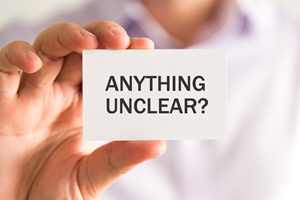The 4 Ds of Bystander Intervention
Have you ever been in a situation at work where you felt you should have intervened to help someone out, but didn’t? Perhaps you were in a meeting and a colleague kept talking over the same person or one of your coworkers repeatedly mispronounced another’s name, or maybe you even witnessed outright bullying. You might have told yourself, “Someone else will help them,” “It’s not my place,” or, “They’ll probably be fine.”
Incidents like these are known as microaggressions and they often demean, belittle or marginalize people. They may be passed off as jokes or banter. But, if allowed to continue without intervention, they often have a harmful buildup effect that can cause serious damage.
So it’s important that we stop being passive bystanders when we see such behavior and start to become active ones instead. It can be hard to make a stand against someone if they are loud or abrasive and particularly so if they are senior to you in the company. But the alternative, staying silent, can make you complicit and regretful.
Intervening doesn’t need to be a dramatic display. It could be a refusal to laugh at a sexist or racist joke, politely walking away from a conversation you don’t agree with or questioning someone’s behavior in a non-confrontational way.
Before stepping in, however, it’s important to make sure it’s safe to do so. Stay calm and courteous throughout. Emotions may be running high, but it’s important that your tone is not accusatory because you could risk the perpetrator becoming defensive or angry. Your role isn’t necessarily to punish someone, but rather to question things. Open up a dialogue and use this to create change.
If you do feel like it’s safe to intervene, do so by using one of the 4Ds of Intervention.
Your first option is to directly intervene. In other words, directly call out the perpetrator’s behavior. Remember to remain calm and be specific about what it was that was offensive. For example, you could say, “That joke was insulting to women and it wasn’t funny. We don’t make jokes like that here.” Tell them to stop and ask the victim if they’re OK.
Distraction is another technique and can help prevent a situation from escalating. This is when you ignore the perpetrator and engage the victim. For example, you might ask the person who’s being targeted to take a walk with you or go get a coffee.
Alternatively, you could delegate responsibility. Essentially, this is when you ask someone else, preferably someone in a position of power, to intervene on your behalf. It can be particularly useful if you feel shy or helpless or if you don’t feel safe to go it alone.
If all else fails, delay the situation. This tactic may be your best option if you feel it’s too dangerous to intervene then and there and if there’s no one else to help you out. If this is the case, wait for the situation to pass and then ask the victim if they’re okay. Ask them if they’d like to report what happened and do so as soon as it’s safe.
If you want to learn more about how to become an active bystander, read the article that accompanies this video.















